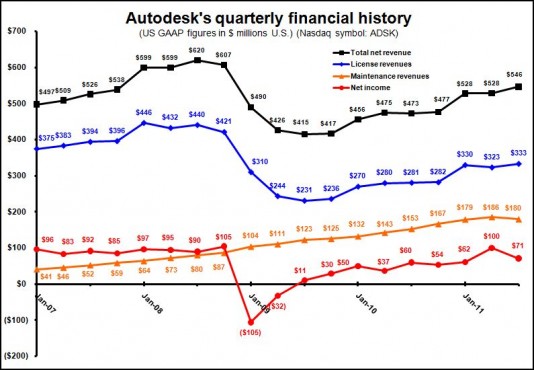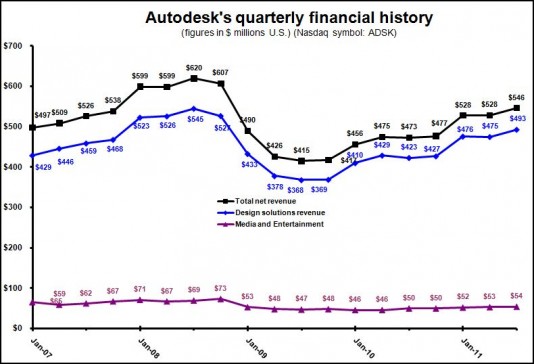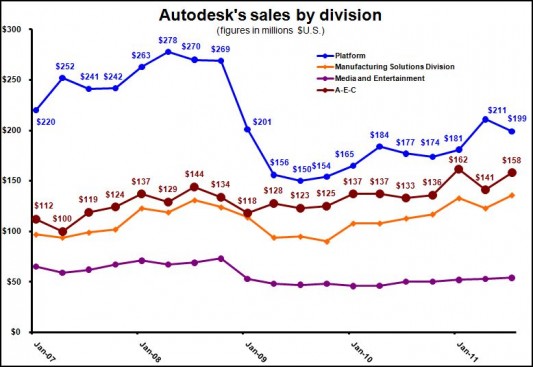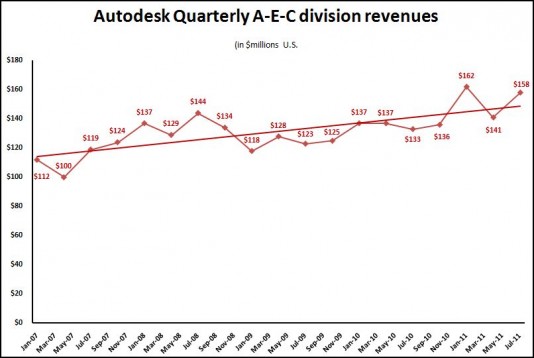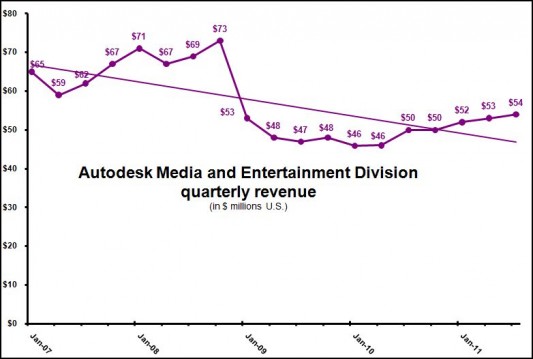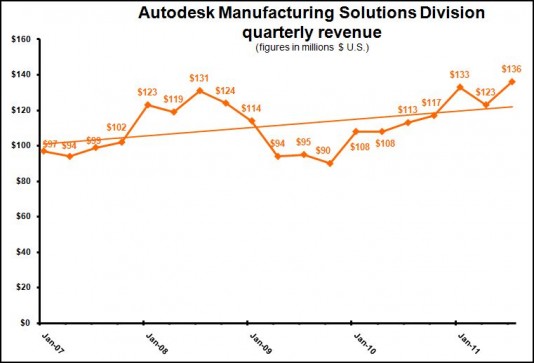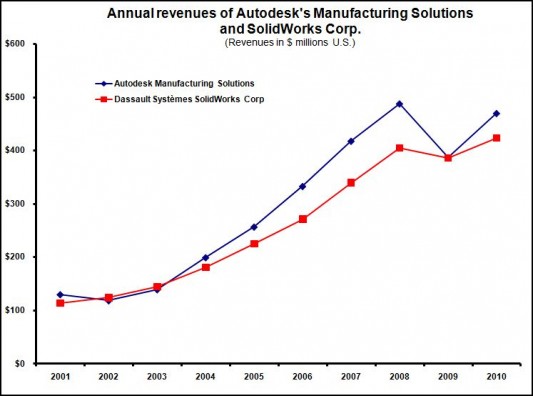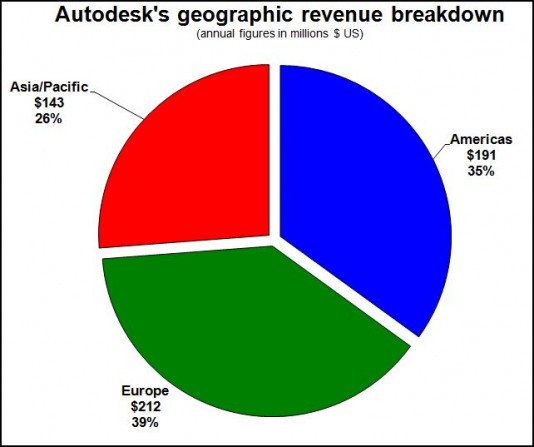If there is a second dip into recession coming, Autodesk can’t find it in the internal indicators.
Autodesk (NASDAQ: ADSK) reported a strong second quarter (the second quarter of Fiscal 2012, for the period ending July 30, 2011), with revenue of $546 million, up 16% compared to the year-earlier quarter.
Autodesk revenues have continuously risen since hitting bottom in 2009, suggesting that business is recovering from the sharp downturn in construction, construction-related manufacturing, and manufacturing in general. Growth is about 4% sequentially in the design solutions business, 17% year-over-year. The exception is the media and entertainment division, which has reported single-digit percentage revenue growth since 2009.
The manufacturing division recorded its best quarter ever, with revenue of $136 million. Autodesk CEO Carl Bass says the investment Autodesk made over the last three years to increase its market share in enterprise-class manufacturing firms is starting to pay off, especially in automotive and aeronautical. Without naming names, Bass said Autodesk did its largest deal ever with an automotive manufacturer during the quarter, “displacing competitors with legacy technology.” Bass also said the new factory design suite—based on AutoCAD technology but incorporating a 3D methodology—is selling well.
Most of Autodesk’s new suites came to market during the quarter. Sequentially, suites have risen from 22% to 29% of total revenue. But the platform solutions division (primarily AutoCAD and AutoCAD-related products) was the only division to be down sequentially, suggesting the growth in suites is offset by a decline in stand-alone sales of AutoCAD technology.
During the question-and-answer period with Wall Street analysts, Bass said if there is another recession coming, the signs are not visible in Autodesk results. Nine months before the collapse of Lehman Brothers in 2008, Autodesk’s Americas revenue started to slow down, and subscription renewals for AutoCAD and AutoCAD LT dropped sharply. Bass said there are no similar indicators today; “We are looking for things that look like the last downturn, and we are not finding them.”
Total license and other revenue for the quarter was $333 million, up 19% compared to a year earlier. Maintenance revenue set a 2Q record at $213 million, up 11% from a year earlier. Maintenance billings were up 37% from a year earlier, with a significant increase in mult-year billings, which Autodesk says are paid in advance.
Net income for the quarter was $71.2 million, up 18.9% from a year earlier.
By geographic regions:
- Revenue in Europe/Middle East/Africa (EMEA) was $212 million, up 12% from 2Q11 and 13% on a constant currency basis. Bass said demand was strong throughout Europe, “even Southern Europe.”
- Revenue in the Americas was $191 million, up 13% from a year ago.
- Revenue in Asia/Pacific was $143 million, up 24% from 2Q11 and up 16% on a constant currency basis.
- Revenue from emerging economies was $88 million, up 23 from a year ago and up 18% on a constant currency basis. Revenue from emerging economies represented 16% of total revenue in the second quarter; it has been as high as 23% in the past.
By divisions:
- Revenue from the platform solutions and emerging business division was $199 million, up 12% compared to the second quarter last year.
- Revenue from the AEC division was $158 million, up 19% from a year ago.
- Revenue from the manufacturing business segment was $136 million, up 20% from a year ago; the total was the highest quarter on record.
- Revenue from the media and entertainment division was $54 million, up 9% compared to the second quarter last year, and up 2% sequentially.
Cash per share on July 30, 2011 was $6.72, continuing an upward trend for six consecutive quarters. Autodesk has almost $1.6 billion on hand in cash and short-term investments, much of it stashed overseas to avoid repatriation taxes.
Nine of our custom charts follow, including multi-year trend lines for the AEC, manufacturing, and media & entertainment divisions, which we have not previously published.
JPR Contributing Analyst L. Stephen Wolfe, P.E., supplied research for this article.

